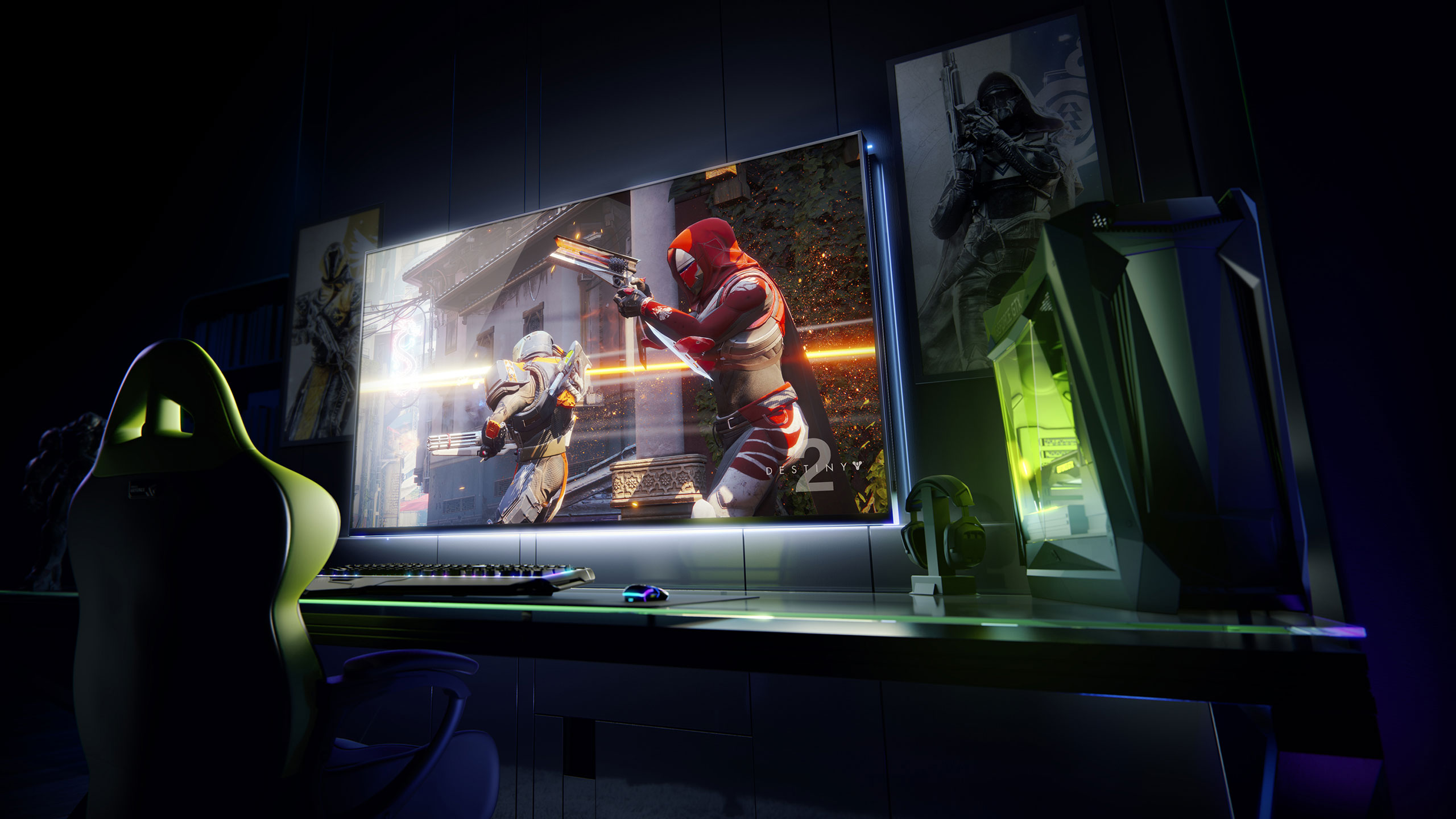Nvidia announces massive gaming displays for the living room
Never bring a knife to a BFGD fight.

Sometimes you want to get away from the standard PC desk and get into the living room, but while gaming on the big screen has been possible, there have always been compromises in some areas. Take for instance refresh rates. Once you've played games on a 144Hz or higher refresh rate display, going back to 60Hz can be painful. Unfortunately, there haven't been any proper gaming HDTVs… until now.
Enter the BFGD. That's Big Format Gaming Display if you're wondering, though we could come up with a few other creative interpretations. Created in conjunction with hardware partners Acer, Asus, and HP, BFGDs will consist of several choice technologies. Start with a 65-inch 4K panel, but then add in a 120Hz refresh rate and HDR support. That's already worlds better than most HDTVs when it comes to gaming, but Nvidia takes things a step further with G-Sync support, meaning you won't notice nasty stuttering effects when there are fluctuations in framerates.
The BFGDs will support Nvidia Shield in addition to regular PCs, though obviously GeForce GPUs would be the ideal way to make use of the G-Sync technology. The display panel itself features a full-array 1000 nit backlight, with DCI-P3 color gamut to help improve visuals. If you're looking for a living room upgrade to last the next decade, these could well be the best option.
Nvidia didn't reveal pricing or availability, though it's reasonable to assume pricing at least will be quite a bit higher than standard 65-inch 4K displays. The panels will also support native framerates like 23.976, 24, and 25 fps for movie fans, eliminating the sometimes irritating interpolation effects seen on other screens.
Keep up to date with the most important stories and the best deals, as picked by the PC Gamer team.
Jarred's love of computers dates back to the dark ages when his dad brought home a DOS 2.3 PC and he left his C-64 behind. He eventually built his first custom PC in 1990 with a 286 12MHz, only to discover it was already woefully outdated when Wing Commander was released a few months later. He holds a BS in Computer Science from Brigham Young University and has been working as a tech journalist since 2004, writing for AnandTech, Maximum PC, and PC Gamer. From the first S3 Virge '3D decelerators' to today's GPUs, Jarred keeps up with all the latest graphics trends and is the one to ask about game performance.


